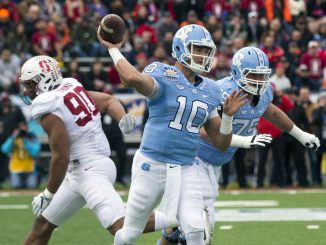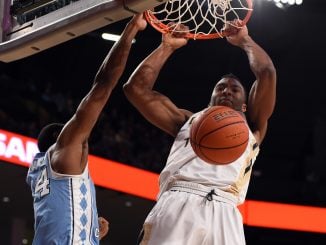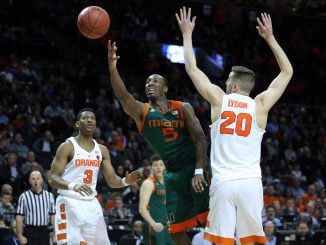
A drill sergeant paced in front of the line of rifle-toting soldiers, barking out the same question over and over.”What makes the grass grow?”Each time, the soldiers responded, in unison: “Blood, sir!”The sergeant met each of them as they received their clip of 18 rounds from the ammo table. He gazed into their eye pro (short for protection) and asked them again if they knew what made the grass grow.Despite wearing ear pro, each soldier heard his question and answered correctly.The RSO (Range Safety Officer) stepped up to give a quick briefing before the shooting started.”I want to personally welcome you all to the center of the universe,” he announced. “Fort Bragg, North Carolina.”The soldiers came to Fort Bragg from units around the country to compete in the Army Reserve’s Best Warrior competition. The ultimate test of mental and physical skill and endurance has been held in Fort Bragg twice.Each of the contestants won a similar competition in their own unit to earn the trip to Fort Bragg. The top-scoring NCO (officer) and enlisted soldier moves on to the Army-wide competition against full-time soldiers from the various commands Sept. 26 to Oct. 3 at Fort A.P. Hill, Va.One might think the reservists would be at a disadvantage compared to career soldiers from other commands, but the Army Reserve is actually the defending champion in the NCO, with Staff Sgt. Andrew Fink of Reserve Command winning 2015 Officer of the Year.The three-day competition featured a total of about six hours of sleep over a 48-hour period, as the candidates were pushed to their limits.The first day consisted of a series of tests and interviews, as well as several “mystery events” in the evening. Among the surprise tasks sprung on the group were questions about parade and ceremony dress protocol, a timed rifle disassembly and assembly, and vehicle repair.”It was definitely something I thought I was prepared for,” said specialist Michael Ringer, of Beaver, Pa. “But they threw a couple things at us.”One thing I didn’t expect was the drilling ceremony.”The group got a 2:30 a.m. wake-up call on Day Two. “We do more before 9 a.m. than most people do all day,” was a common boast in Army commercials it was certainly true for the Best Warrior competitors. By the time most folks were sidling up to the water cooler, the competitors already had a six-mile march in full gear, including body armor and a ruck sack full of gear, under their belt.”It varies based on the person, but they’re carrying about 90 pounds of gear, on average,” said Major Jacqueline Wren, the public affairs officer for the event.The forced march included treks through water as well.”We cleared out the snakes before the march began,” a major-sergeant told the group later in the day.”Thank you, major-sergeant,” came the reply.The ruck drained the competitors more than anything else. One contestant’s post-march reaction left the Army public affairs office debating whether they could use the phrase “embrace the suck” in a press release.”The ruck was a little harder than I thought,” said Specialist Sarah Preston of Ohio, one of four females in the competition. “I wasn’t planning for the full battle rattle. I knew it would be heavy and that we’d be going through the water but…” She caught herself sounding a little too negative. “It was a good time,” she concluded.Immediately after the ruck march, and with 9 a.m. still far in the future, the warriors reported to the obstacle course. The timed run included several climbs, belly crawls, and balancing challenges. Soldiers had to swing on a rope and land on a narrow log, keeping their balance to avoid a time penalty.Then, after a brief 10:30 a.m. “lunch,” they headed to the ranges to prepare for tests with three different weapons the M4 assault rifle, M9 pistol and M249 machine gun.While waiting for the range to be prepared, an officer addressed the group, encouraging them to “utilize shade.” As the candidates collapsed to the ground, leaning against trees, a few fiddled with their weapons system.”In the reserves, we don’t usually get our hands on the M4 too much,” said Ringer. “We still have the M16, which was the predecessor to the M4. It’s a little bit of a change.”Drill instructors gave lastminute tips to the warriors before setting them loose on the range. “Your trigger pull should be like how I would sneak a taste of mashed potatoes from my grandmother’s kitchen,” said a sergeant, scooping his crooked finger through the air. “Slow and steady, no jerking.”After ending Day Two at close to midnight, the warriors were roused a half-hour earlier, soaking in the delight of a 2 a.m. wake-up call. They were sent for “daybreak land navigation,” followed by a 10-station combat skills training lasting most of the day.The weather grew progressively worse as the competition continued, forcing the exhausted competitors to deal with cold and rain as they struggled to finish strong.”I knew I had to be in top physical condition,” said Ringer.When the scores were tabulated, Sgt. 1st Class Joshua Moeller was named the Best Warrior among officers, and Specialist Micahel Orozco won Soldier of the Year.The other competitors took pride in competing and finishing the test, however.”It meant the world to me, just to represent my hometown, my high school and college, as well as my company,” said Ringer.”I just wanted to be a part of elite soldiers giving it their all,” said Preston. “Morally strong, physically fit.”



